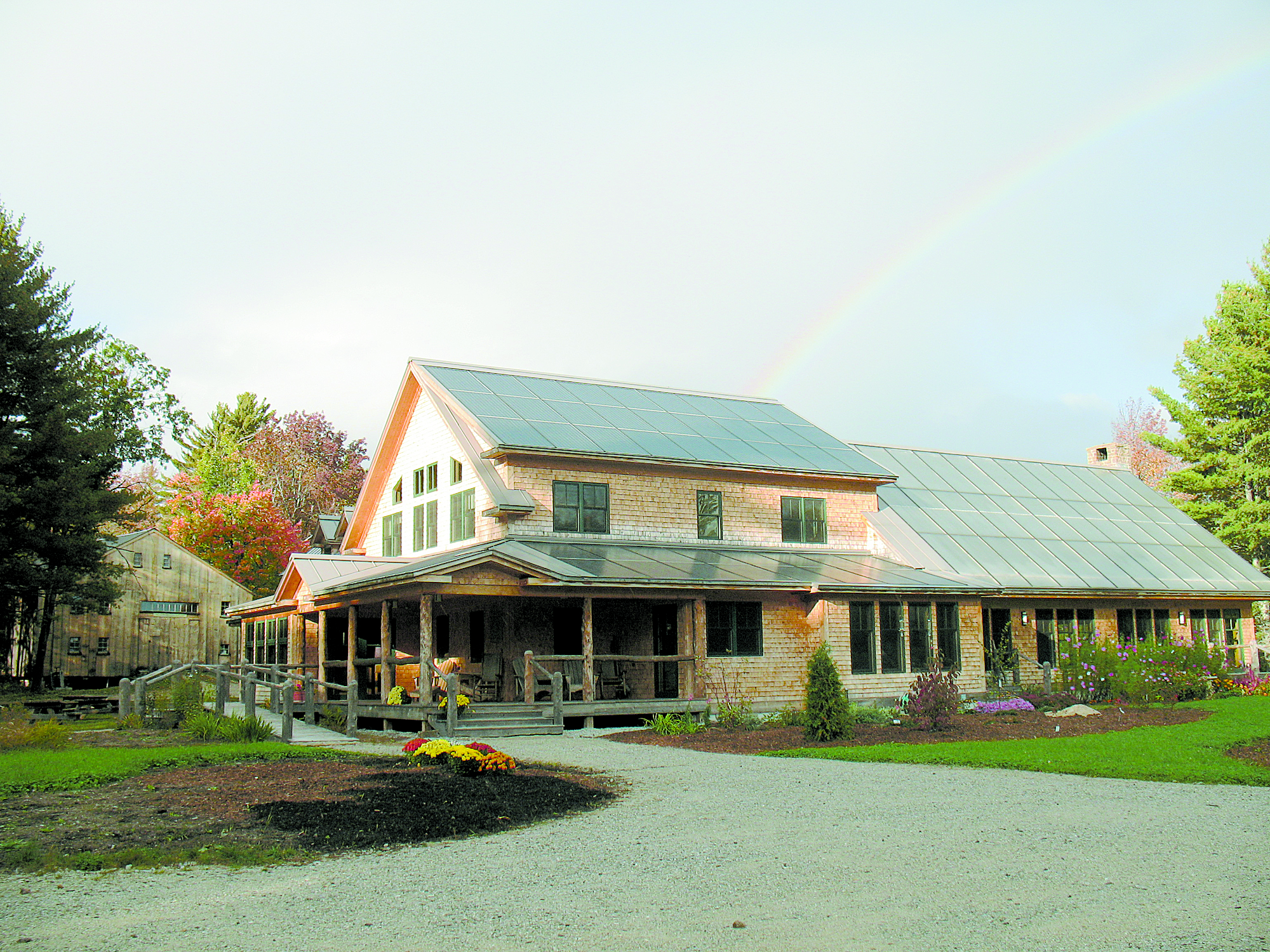By George Harvey
Solar power was a little slow to get off the ground in New Hampshire because of a combination of factors. One was a generally unsupportive set of policies of the state government, though these have been partly addressed in the last few years. Another reason for the slow start was the common prejudice against solar power, based on the idea that New Hampshire is too far to the north and too cloudy to make efficient use of photovoltaics (PVs).
Nevertheless, solar power has been taking off in New Hampshire. This began slowly ten years ago, but it is clearly evident in some places, such as the Mount Washington Valley. People in that area, appreciative of the frugality involved in getting heat and power without spending money on fuel, were among the early adapters.
In 2006, the Tin Mountain Conservation Center, in Conway, became one of the first in the valley to adopt solar power. It has a solar thermal system that provides 75% of its heat, with the rest coming from locally harvested wood. In addition, solar PVs provide all of its electricity. The center has been a net-zero energy user from 2006 until recently. Now, a new building has increased the amount of power the center uses, but that is getting its own power to make it net-zero as well.
Other outdoor and environmental organizations followed in the conservation center’s footsteps. The Appalachian Mountain Club uses solar, small wind turbines, and hydro for its hut system in the area. Also, in the spring of 2015, a PV system was installed by the Mount Washington Observatory’s Weather Discovery Center in North Conway.
One of the most impressive systems in the area was a municipal project belonging to the North Conway Water Precinct. Its solar PVs were installed in 2011. In addition, the precinct has a geothermal system consisting of 16 wells, each 500 feet deep; these were installed in 2011 at a cost of $1.1 million.
The declining prices for solar panels and a more hospitable political environment brought more installations for commercial operations. The Seavey Street Laundromat went solar in 2010; this promises an impressive savings in energy, when you consider the amount of hot water used for washing clothes. In 2011, the Conway Daily Sun installed rooftop panels for a thermal system. A similarly sized system in the same community was installed in 2012 at the Office Market. Also in 2012, Conway Pines installed a PV system to support its 32-unit affordable rental apartments. Badger Realty installed its solar PV system in 2013.
The movement begun at the Tin Mountain Conservation Center was pushed forward when members founded the Tin Mountain area Renewable Energy Initiative. The initiative’s website makes it clear that this was modeled to a large extent on the very successful neighbor-helping-neighbor community project of the Plymouth Area Renewable Energy Initiative (PAREI), based in Plymouth, New Hampshire. This, in turn, was based on the tradition of barn-raising in communities in much of the United States. These programs install solar energy systems, both solar photovoltaic and solar thermal, at the homes of people in the nearby areas. The Tin Mountain initiative’s web site is tinmountain.org/program-descriptions/tmrei. PAREI’s Energy Raisers’ page is plymouthenergy.org/raiser.html.
Another way the Mt. Washington Valley region is acting sustainably is with the many businesses which offer local goods and food. Old Village Bakery in North Conway, a neighbor to Seavey Street Laundry, offers fresh goods which are all made from scratch using local ingredients. A great place to visit is The Other Store in Tamworth, NH. This unique shop is a hardware store with a café which offers home cooking with fresh, local ingredients.
We should note a number of communities that have appeared in pages of Green Energy Times in the past. A solar array of 944 kilowatts was recently installed in Petersborough, NH. Franklin, NH has purposely set itself on a path toward sustainability through permaculture.
In other states, the movement still continues. In Vermont, Norwich’s, municipal offices are entirely powered by renewable electricity, with the renewable energy credits being retired by the town. Montpelier continues to make progress toward having 100% of its energy come from renewable sources. Rutland is working on its goal of being the Solar Capital of New England, with help from Green Mountain Power. Burlington was the first sizable city to get 100% of its power from renewable sources.
Greenfield, Massachusetts is getting nearly 100% of its power from renewable sources. A number of communities in New York and elsewhere in the Northeast are moving toward getting all their power from renewables as well. One secret here was allowing community choice programs to function in the states.
We at Green Energy Times take great joy in our neighbors’ efforts to move away from our common destructive past, which seems to hold so many people hostage. As they do so, they are moving into a more sustainable, fossil-free future, in which the environment benefits from a reduction of the amounts of poisons to which it is exposed, our health benefits from the reduction of pollution we breathe and drink, our wealth benefits from reduced costs, and our society benefits from positioning itself by building the local economy into a self-sustainable system.











Leave a Reply